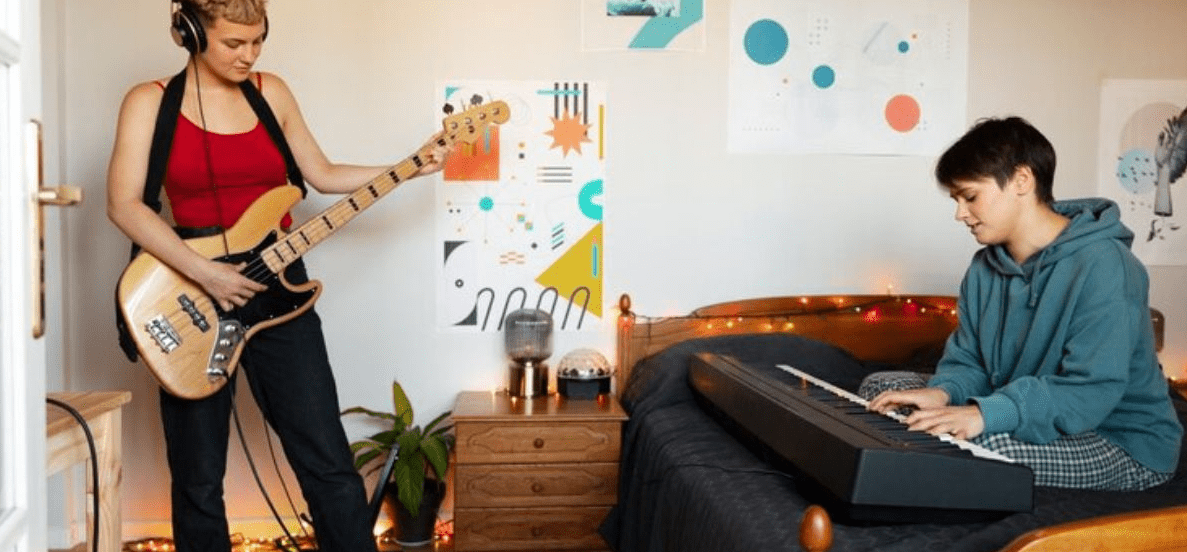As for the song, it functions as a cover with a lively rhythm. Pulsamento is one of the most important rhythmic techniques for adding depth, emotion and groove to music. If you want to improve as a musician and express yourself through music, whether you play jazz, classical guitar or write songs, learn pulsamento.
Table of Contents
What is Pulsamento?
The term “placemint” comes from the Spanish word “pulsar,” meaning “to pulsate or beat,” and refers to the continuous, rhythmic beat of music through changes in notes or chords. It serves as the basis for any musical composition, providing the underlying rhythm that holds melody and harmony in place.
History and Origins
Drawing on centuries of musical history, we can trace the origins of plazamento. The pulsamento is an integral part of many musical traditions around the world, from the fingerpicking patterns of classical guitar to the syncopated rhythms of flamenco.
Classical Music
In classical guitar literature, the pulsamento is important for expressing melody and maintaining a constant pace. The placement technique was often used by composers such as Fernando He Sol and Francisco Telega to increase the rhythmic complexity of their works and bring them into the realm of his classical genre.
Jazz
Placements play a dynamic role in jazz music, serving as the rhythmic foundation for group improvisation and performance. Best known for his command of jazz guitarists such as Django Reinhardt and Wes Montgomery, his guitarists are known for incorporating infectious groove and swing into their playing.
Flamenco
Placement is a technique used by flamenco guitarists to create the intense rhythms that define this passionate and expressive style. Flamenco artists use techniques such as golpe and lasguido to create energetic and intense percussion effects.
Fingerstyle Technique
For fingerstyle guitarists, the ability to gain control and precision in finger movements is essential to mastering the plazamento. Players can create smooth, melodic flows of sound by switching fingers and timing their strokes to the beat.
Strumming Patterns
Achieving a comfortable plazamento on a strummed instrument such as an acoustic guitar requires learning different trimming patterns. Players can experiment with different combinations of upstrokes and downstrokes to make their performance richer and more dynamic.
Rhythmic Accuracy
Above all, perfect rhythmic accuracy is essential to learning pulsamento. Players can further develop their sense of timing and groove by practicing with a metronome and focusing on ingraining the rhythm of the song.
Enhancing Rhythm
The basis of music is the plaza into, which gives performers and listeners a constant pulse that tears them apart. By mastering placement, musicians can improve the overall rhythm and flow of their performance.
Adding Depth and Emotion
Pulsamentos create instantaneous changes in articulation and dynamics, adding depth and emotion to musical passages. Pulsamento is a technique used by musicians to express different emotions and moods, from delicate arpeggios to powerful chord progressions.
Improving Overall Musicality
By practicing placement, musicians can improve their expressive and general musical abilities. The ability to play different styles of music more firmly and skillfully is related to the rhythmic control and precision required for placement.
Fusion with Electronic Music
In modern music production, the pulsamento method is often combined with electronic components to produce unique and varied sounds. Pulsamento blurs the boundaries between electronic music genres by using generated rhythms and sampled guitar sounds to add a human touch.
Creative Applications in Songwriting
Lyricists and musicians use pulsamento to create catchy arrangements and melodies Using various chord progressions and rhythmic rhythms, he creates works that deeply touch the hearts of his listeners.
Overemphasis on Speed
One of the most common mistakes a budding musician makes is prioritizing speed over rhythmic control and accuracy. Speed is amazing, but consistency and accuracy should be your top priority when learning Pulsamento.
Lack of Dynamics
Another difficulty stems from the tendency to ignore dynamics and emotion when playing persamento. When musicians focus only on hitting the right notes, they risk missing the subtleties of phrasing and articulation that bring a song to life.
Timing Issues
Pulsamento requires precise timing. Even the slightest inaccuracy can block the flow of the music. To avoid frequent timing issues, it is important to practice with a metronome and get a good feel for your internal rhythm.
Start slowly and Gradually Increase the Speed
It is important to start slowly and focus on understanding the basics of pulsamento before attempting more advanced techniques. By gradually increasing speed and difficulty over time, musicians can establish a strong foundation for their abilities.
Focus on Consistency
The secret to learning pulsamento is consistency, and constant practice is needed to improve accuracy and muscle memory. Musicians can improve their skills and competencies over time through consistent practice sessions.
Record and Listen for Feedback
Recording your practice session and reviewing the audio later can help you pinpoint areas that need work. Critically evaluating your performance allows you to identify deficiencies and plan solutions to problems.
Andrés Segovia
Andrés Segovia, a renowned classical guitarist, was well known for his mastery of the pulsamento technique. His recordings of works by composers such as Bach and Soul have influenced guitarists around the world for many years.
Paco de Lucía
Paco de Lucia was a legendary flamenco guitarist renowned for his exquisite persamento style. He was known worldwide for his avant-garde rhythm and harmony experiments, pushing traditional flamenco music’s boundaries.
Conclusion
A key element of music, pulsamento gives the piece rhythm, emotion, and expression. Whether you are a jazz musician, a classical guitarist, or a contemporary songwriter, mastering pul’samento will help you perform at a high level.
